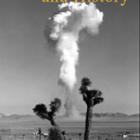Mann, Michael. “Timber Trade on the Malabar Coast, c. 1780–1840.” Environment and History 7, no. 4 (Nov., 2001): 403–25. doi:10.3197/096734001129342531. State formation in south-west India at the end of the eighteenth century led to heavy exploitation of natural resources, particularly of the hardwood timbers of Travancore, Malabar, and Kanara. These were either used as articles for export or as building materials for the construction of ships at local port towns. Over centuries, the Malabarian timber merchants had developed trading structures that turned out to be resistant to any attempts to transform them according to the needs of a new ruler. In particular, from the 1790s onwards the British colonial regime tried hard to restructure the well-organised trading system. But ultimately the British failed, because they had neither the power nor the means to pursue such a policy in the long run. On the contrary, at the beginning of the nineteenth century the authorities in Bombay had to adapt to the social and economic realities in the Malabar province and the adjacent country. The Malabarian local ‘agency’ remained resistant to the British regime until at least the middle of the nineteenth century. All rights reserved. © 2001 The White Horse Press
"Timber Trade on the Malabar Coast, c. 1780–1840"
Mann, Michael | from Multimedia Library Collection:
Environment and History (journal)


